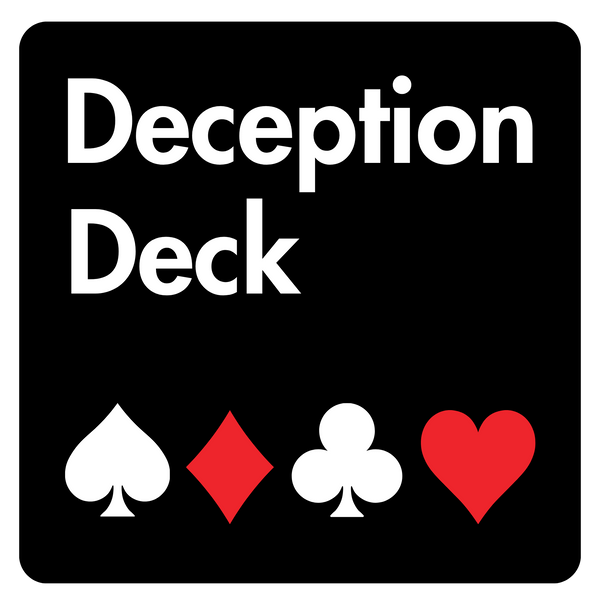In a world filled with both trust and skepticism, deciphering the truth from the fabrications has become incredibly crucial. Whether it's in personal relationships, corporate settings, or even criminal investigations, understanding the dynamics of deception detection is essential. One aspect that many people overlook, however, is the importance of context in this process. In this blog post, we'll explore why context plays a pivotal role in deception detection and how it can enhance techniques, such as Statement Analysis.
The Nature of Deception
Deception is more than just telling a lie; it is a complex behavior that often involves a combination of verbal and non-verbal cues, emotional responses, and situational influences. People lie for various reasons, from self-protection to manipulation, and understanding these motivations can greatly enhance our ability to detect deception.
Understanding Context
At its core, context refers to the circumstances that surround an event, statement, or situation. For deception detection, context involves understanding the environment, the relationships between the parties involved, and the specific circumstances under which the communication is taking place. Ignoring context can lead to misleading interpretations and false conclusions.
Why Context Matters in Deception Detection
Let’s delve deeper into the reasons why context is vital in deception detection:
- Situational Awareness: Each scenario is unique; the context provides crucial information that can help determine whether a statement is true or false.
- Behavioral Norms: Understanding what is considered 'normal' behavior for an individual or group in a specific context can help identify anomalies that may indicate deception.
- Emotional Cues: The emotions expressed by a person can vary widely depending on the context in which they are communicating. Recognizing these emotional cues can aid in detecting deceit.
- Language Use: The words people choose, their tone, and how they express themselves can change based on context. This makes analyzing statements more effective.
Statement Analysis and Context
One of the primary tools employed in deception detection is Statement Analysis. This technique involves dissecting spoken or written statements to uncover the truth behind them. However, effective Statement Analysis requires a deep understanding of the context surrounding the statement.
Elements of Statement Analysis
When conducting Statement Analysis, several key elements come into play:
- Content: The actual information conveyed in the statement.
- Structure: How the statement is organized can indicate planning or spontaneity.
- Language Use: Specific wording can signify avoidance or guilt.
- Context: Timing, environment, and relationships play a crucial role in interpreting the statement.
The Importance of Contextual Cues
Understanding contextual cues is essential for any deception detection method, especially Statement Analysis. These cues can range from emotional triggers, like laughter or tears, to situational factors, such as location or time of day. Here are a few examples:
Environmental Context
Where a conversation takes place can heavily influence the dynamics of the exchange. For instance, a private meeting might encourage honesty, while a public setting could lead to guardedness. Recognizing these environmental cues helps enhance the reliability of Statement Analysis.
Temporal Context
Time can also be a significant factor in understanding a statement. A person’s emotional state may vary dramatically depending on when a statement was made. Analyzing statements through the lens of their temporal context can lead to deeper insights into whether the information provided is truthful.
Relational Context
The relationships between parties involved can significantly affect communication. A person may behave differently when talking to a superior versus a peer. Knowing the dynamics of these relationships helps identify inconsistencies during Statement Analysis.
Common Pitfalls in Deception Detection
While context is crucial, several common pitfalls can arise during the deception detection process:
- Overgeneralization: Assuming that behavior in one context translates to another can lead to inaccurate judgments.
- Confirmation Bias: Looking for evidence that supports preconceived notions can cloud judgment.
- Ignoring Non-verbal Cues: Body language and facial expressions often provide key context that may be missed.
Enhancing Your Deception Detection Techniques
To become more adept at detecting deception, consider the following strategies:
- Improve Context Awareness: Always assess the situation before jumping to conclusions. Observe the environment, relationships, and emotional states.
- Practice Active Listening: Pay attention to not just what is being said but how it is being said. Look for inconsistencies between verbal and non-verbal cues.
- Educate Yourself on Statement Analysis: The more you understand this analytical tool, the better you will become at deciphering truth from deception.
- Utilize Technology: Leverage software tools that analyze speech patterns and body language for more comprehensive insights.
A Case Study: Context in Action
Consider a scenario where a manager conducts a performance review with an employee who has consistently underperformed. If the employee claims that they were overlooked for critical projects due to political favoritism, it's essential to examine the context. Did the manager observe their work ethic during team collaborations? What was the supervisor’s perspective? By exploring these contextual factors, the manager can more accurately assess whether the employee's claims are truthful or deceptive.
What Lies Beneath: Think Deeper
As we have discussed, context plays an indispensable role in deception detection. By incorporating a holistic approach that includes contextual awareness, you can significantly enhance your Statement Analysis techniques. The goal is not merely to label someone as deceptive but to understand the intricacies of human interaction—complete with its uncertainties and complexities.
The next time you find yourself attempting to uncover the truth, remember to peel back the layers of context that surround the statement. Doing so will not only enable you to become more adept at spotting falsehoods but will ultimately deepen your understanding of human nature itself. So, let's embrace context and transform our approach to deception detection, opening the door to a more enlightening and truthful future.


